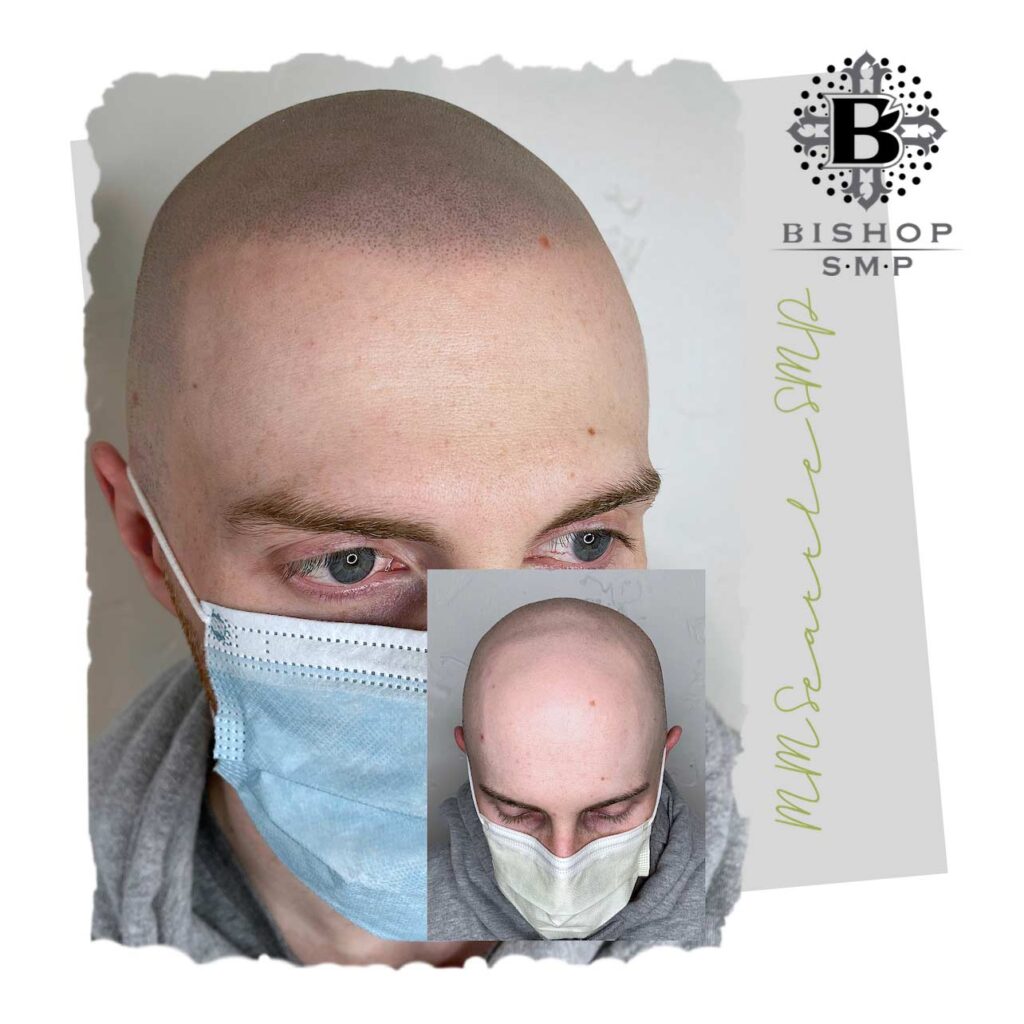Are you struggling with hair loss caused by alopecia? Scalp micropigmentation (SMP) is a revolutionary treatment that offers a viable cosmetic solution to it. In this article, we will learn how SMP can help you regain your confidence.
What is Alopecia Areata?
Alopecia areata is an autoimmune disorder that affects the hair follicles and results in sudden and unpredictable hair loss. It can affect both men and women—and even children. It typically starts as one or more small, round patches of hair loss on the scalp, but it can also affect the eyebrows, the beard, and other parts of the body. Hairloss due to alopecia is often rapid and may leave behind smooth, bald patches. In some cases, the hair may grow back, but it can also come back in a different color or texture than before. In more severe cases, the entire scalp may be affected, leading to complete baldness. There are a few factors that can contribute to alopecia. Read on to learn more about them.
Genes
Alopecia can be caused by genetic factors such as a family history of baldness. Examples of this include alopecia areata, androgenic alopecia, and cicatricial alopecia.
Hormonal Changes
Changes in hormones can also cause alopecia. In women, this is commonly associated with pregnancy, childbirth, menopause and the use of birth control pills.
Autoimmune Disorders
Alopecia can be caused by an autoimmune disorder, such as lupus or thyroid disease. In these cases, the body’s immune system mistakenly attacks the hair follicles, leading to hair loss.
Stress
Stress can cause the problem as it can cause the body to produce high levels of the hormone cortisol, which can lead to hair loss. In some cases, the condition is reversible once the stress is reduced or eliminated.
Hair Styling
Certain hair styles, such as tight braids, can cause alopecia if worn constantly over a period of time. This type of alopecia is known as traction alopecia.
Medications and Nutritional Deficiencies
Certain medications, such as anticoagulants and chemotherapy drugs, can cause alopecia. Nutritional deficiencies, such as a lack of iron, zinc, or biotin, can also lead to alopecia.
How Does Scalp Micropigmentation Work for Alopecia?
Scalp micropigmentation (SMP) is a cosmetic procedure that uses tiny, specialized needles to inject natural pigments into the scalp to create the appearance of a full head of hair. It can be used to treat the cosmetic effects of alopecia.
The process begins with a consultation with a dermatologist or practitioner to determine the best treatment plan for the individual. The practitioner then uses a small needle to inject pigment into the scalp, creating the look of a full head of hair. The pigment used is specially formulated to match the surrounding hair color and texture, so that the results look natural. It is minimally invasive, and there is no downtime required after the procedure. Results are usually visible after one or two treatments, and they can last up to three years with proper care.
The main benefit of SMP for alopecia is that it can help restore the appearance of a full head of hair in a short amount of time. It can also boost the individual’s confidence and help them feel more comfortable in their own skin. In addition, it can provide a more natural look than other forms of hair restoration treatments such as hair transplants.
In conclusion, SMP is an effective solution for those who are suffering from alopecia. The non-invasive procedure is quick and the results are long-lasting. If you are looking for a permanent solution for your alopecia, MM Seattle SMP is here to help. Contact us now!
Share This Post:
More Posts

All You Need to Know About Male Pattern Baldness

The Top Myths about Scalp Micropigmentation Debunked

How Safe Is Scalp Micropigmentation?

Does Scalp Micropigmentation Work for Alopecia?



